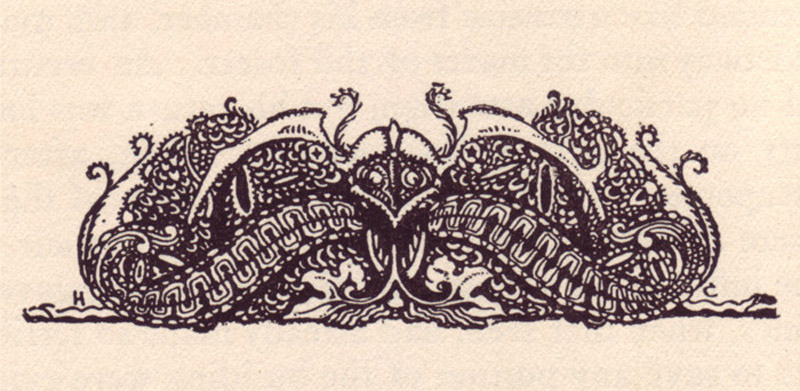The Illustrations to Tales of Mystery and Imagination, by Edgar Allen Poe, by Harry Clarke, 1919. It took quite a while to set these up. While I really appreciate people who take the time and trouble to scan images from these old books, I’d appreciate them more if they included what story they relate to also. So, I bought the e-book, and even with that, there were a few bumps along the way. The black and white illustration to The Colloquy of Monos and Una was not included in the scans, and it’s nowhere to be found on the ‘net either, except for two instances, with the image being very small indeed, so that one will not be the best. The scans also had two images for The Pit and the Pendulum, while my book only had one. Any errors belong to me.
Anyroad, we start with MS. Found In A Bottle: “Incomprehensible Men! Wrapped up in meditations of a kind which I cannot divine, they pass me by unnoticed.” Click for full size.




I’ve never cared much for Poe. I read Tales when I was 9 or 10, and the only stories which struck me at all were The Tell-Tale Heart and The Cask of Amontillado. The rest left me indifferent. Most of his characters were too frail and superstitious for me to care about much.
That said, as usual, Clarke’s illustrations are exquisite, and breathe a wealth of life, emotion, and death into the stories, so I might revisit them.
Caine
re: Poe
Me, too.
I read them at about the same age and, except for some forced reading in high school, not since.
I wonder if I’d like them as an adult.
Chigau:
I read them again in HS, same reaction. I haven’t decided whether or not I’ll give them yet another try, right now I’m immersed in a couple of books, so it would be a while anyroad. Now that I think of it, a lot of the dislike might be his writing style, which I find seriously irritating.
Well, I like Poe. But his prose style does tend toward the pompous rather than the pulse-pounding. Especially his habit of inserting untranslated French. Why did English language authors do that? Was it common for people who could read English to also be fluent in French?
Anyway, as to the art, I can’t help thinking of Japanese woodblock prints. I know they inspired the Impressionists. Perhaps Clarke also had a fondness for them.
The phrases in French thing was widespread for too long; it was a way to be seen as cosmopolitan and sophisticated, more importantly, it flattered the reader that they were among the sophisticated cosmopolitans. It was a latter day version of all the authors who inserted Latin phrases in their stories, to show they and their readers were versed in the classics. Basically, snobbery.
That doesn’t bother me as much much as the faint, flowery prose. I find that style to be incredibly irritating, so I always rush through, trying to extract the actual story out of all the pomposity.
Woodblock prints have wowed and inspired just every artist on the planet. I can’t speak for Clarke, but I wouldn’t have been surprised if he wanted that feel for this book. There’s so much in every illustration, you can stare at them for ages, taking in all the detail.